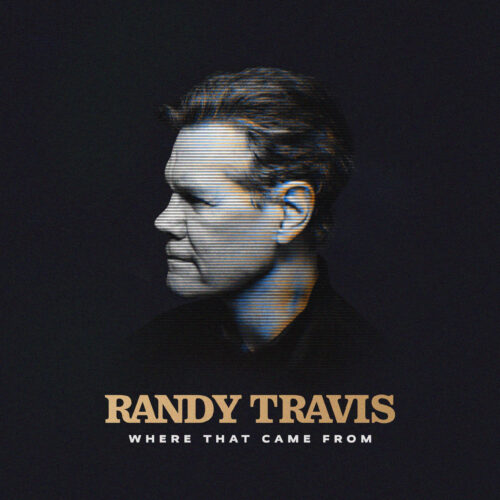
On May 3, Country music star Randy Travis surprised fans with “Where That Came From,” his first new music since a 2013 stroke limited his speech. Produced with the help of AI and voice cloning technology, now that song has charted on Country radio – Travis’ first to do so in almost two decades.
While the Beatles made headlines for using AI to touch up John Lennon’s vocals on “Now and Then” in 2023, what Warner Music Nashville used went far beyond. Travis’ friend and producer Kyle Lehning used AI to overlay the artist’s voice and song style over the original performance by James Dupre.
Warner Music Nashville said in a statement, “Lehning and Travis remained constantly at the helm throughout the entire process. Together, they spent months working with Travis’s vocals and putting a human touch, millisecond by millisecond, on every note of “Where That Came From.” It marks an important moment in history as the first steps toward removing the ‘artificial’ in artificial intelligence and replacing it with authenticity.”
Authenticity is the key word – for a genre that puts so much value on the “real,” the release has been carefully calculated. As presented by Jacobs Media President Fred Jacobs at Country Radio Seminar 2024, the most recent Techsurvey showed a gap in understanding AI, specifically among Country music fans. A majority remain unfamiliar with AI, but Country audiences have significant concerns over the technology’s rapid development.
Radio Ink asked Jacobs – given his insights into AI and the format – to share thoughts on whether audiences could be put off by the use of voice cloning in the song. He told us, “This is a great example of a hypothetical question about AI versus a human, real-life, emotional example. Yes, the audience is generally wary of AI, especially used by ‘bad actors,’ but this is a case where the technology is being used for good – with the artist and his family’s blessing.”
“The upside is that no one’s trying to fool or trick anybody here – Randy Travis fans know his story and the artist has been completely transparent with what they’ve released and how it was produced.”
So how can Country stations best discuss the single? Jacobs said, “Why not let the audience have a voice in this via an online vote and comments? I would post the video (which totally sells the song and the story behind it). Randy’s face and those around him show him so profoundly thankful AI bought him another chance for his voice to be heard.”
“Sometimes the data has to be focused through the human lens, and in this case, AI is a miracle.”
Radio Ink also talked to Fletch Brown, Operations Manager and Program Director for Big River Broadcaster’s Kix 96 (WXFL) in Muscle Shoals, AL. Brown had expressed his concerns about AI’s use in the industry in the February edition of Radio Ink magazine as one of our 2024 Top PDs in Country Radio.
WXFL is taking a methodical approach to “Where That Came From.” Brown has already put what Fred Jacobs talked about into practice, saying, “The listener response was largely positive, with the caveat that they saw Randy Travis’ reaction to hearing himself, and they were touched. My morning show host did spotlight it one day last week, and took listener reactions on air, and on social media.”
While Travis has not yet made it into rotation on Kix 96 as Brown waits to see its performance of several weeks, “Where That Came From” is available for request and Brown is gauging his audience’s interest.
As for the broad use of artificial intelligence in the industry, Brown – like many – still has his qualms.
“Anyone who knows me knows I am not the biggest fan of AI in any creative process. Radio, music, visual art, creative writing, and others have found a way to use AI and call it a tool. I am hesitant to embrace it because throughout human history tools change things, and not always for the better. Yes, they can revolutionize an industry, but how are human
skills and talents moved in those industries? What do we lose? We need to be careful how we define “tool” A hammer is a tool. A carpenter uses a hammer to build a house, he doesn’t ask the hammer to build the house for him.”
“As for artists in music, I am fine with it if the artist is in control of how it is used. If used to revive an artist posthumously, Prince, for example, then no. Even if the artist’s estate is consulted. Because these artists have no say in the final product, how this new artwork
represents them. Artists do not release music unless it meets their artistic standard of quality, because that work represents them.”
“Randy Travis was able to hear this tool represent him, and he approved. James
Earl Jones gave Lucasfilm the rights to use his voice forever as Darth Vader. He was compensated, and approved. That’s fine. I think it is a mistake to think that the tool can ever replace the artist. It’s a cute novelty, it is not creative art.”






As a writer I want my actual thoughts and hands creating the work. I do not want AI technology producing work with my writing style and thoughts inculcated then marketing it as my work.
As a parent I want me to raise my children using my own style, essence, presence – you know the whole nine. I do not want an AI Bot overlaid with my style, essence, presence, etc. representing me, the parent. Let it be clear the AI technology is assisting me with parenting.
I do not agree with James Dupre-used-AI tecnology overlaid with Mr. Travis’ talents representing the music from the artist, Mr. Travis. Let it be clear that James Dupre-used-AI tecnology is part of the production.